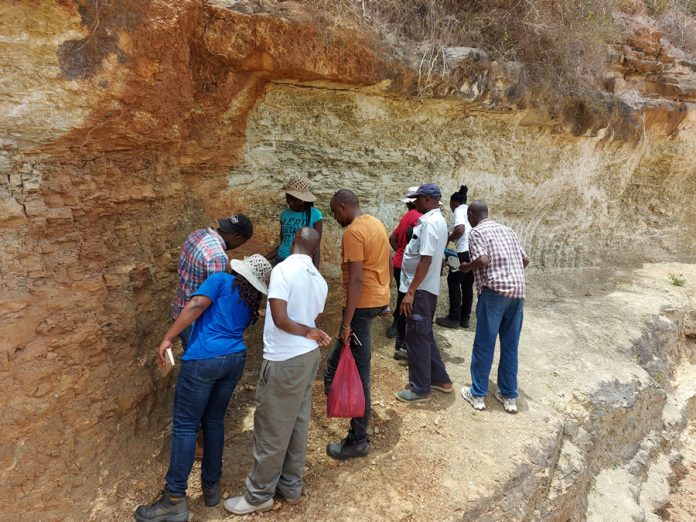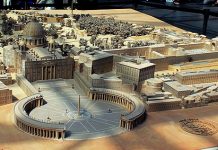Top 10 Mineral-rich Areas in Kenya
“Kariandusi near Gilgil” are familiar words that often flash in the mind of a typical Kenyan who tries to recall his or her primary school days.
While Kenyans continue to question the real existence of ‘textbook places’ like Nyika Plateau and Kariandusi, these locations are a pointer to Kenya’s enormous mineral wealth.
The following are the mineral-rich areas in Kenya.
1. Kwale
-
- Kwale is arguably the richest point in Kenya in terms of mineral resources.
- It is home to one of the biggest mining companies in Kenya known as Base Titanium.
- As its name suggests, the company is involved in the high-value extraction of titanium 50 kilometers south of Mombasa.
- Under what is known as the Kwale Operation, Base Titanium actively mines titanium just 10 kilometers from the Indian Ocean shores in Kwale.
- Titanium is a high-value mineral that is vital in the manufacture of computers, smartphones, and surgical tools, among other things.
- Kwale’s Mrima Hill also has Rare Earth Metals. These are a set of 17 metallic elements that include scandium and yttrium.
- Mrima Hill is among the world’s 5 richest deposits of Rare Earth Metals.
- The mineral-rich south coast also has considerable gemstone deposits.
Also read: List of Minerals in Kenya and Where They Are Mined
2. Taita Taveta
-
- Alongside Kwale, Taita Taveta is among the mineral-rich areas in Kenya.
- Jointly with Kwale, the area is known as Taita – Kwale Gemstone Belt.
- Taita Taveta is home to highly valuable gemstones.
- The gemstones are found in the following forms;
-
- Tsavorite
- Sapphire
- Ruby
- Spinel, among others.
-
- Construction and equipping of a Gemstone Value Addition Facility is underway to boost low revenues from the export of raw stones.
- Iron ore deposits also exist in the Manyatta area in Taita Taveta County.
- Crystalline graphite deposits are as well found at Chawia Mines in Taita Taveta County.
- Graphite is used in the making of;
-
- Batteries
- Pencils
- Nuclear reactors
- Lubricants
-
3. Turkana
-
- Turkana County is an oil-rich area in Kenya with tens of exploration wells.
- The Northwestern region of Kenya has an estimated 2.85 billion barrels of crude oil ready for commercial exploitation.
- Kenya exported 200,000 barrels of crude oil to ChemChina, a Chinese company, at a cost of Ksh 12 billion in August 2019.
- This was a breakthrough moment for oil exploration in Kenya which has been taking place since 1956.
- Tullow Oil, a British company runs petroleum operations in Turkana County.
4. Magadi
-
- Magadi is a lakeside town in Kajiado county, Kenya, and is known for its infinite Soda Ash wealth.
- Soda Ash which is sodium carbonate (Na2CO3) is naturally available and mined at Lake Magadi in Kenya.
- Cargo trains branded Magadi Soda have traversed the country for decades, transporting the valuable export to the port of Mombasa.
- Soda Ash is used in the manufacture of glass, as well as, in softening water.
- Soda Ash is also used to soften water as well as clean the air.
- Tata Chemicals Magadi Limited (formerly Magadi Soda Company) conducts the mining operations at Lake Magadi.
- Established in 1911, the company is Africa’s largest Soda Ash manufacturer and also one of the leading exporters in Kenya.
5. Migori
-
- Migori is endowed with gold which is extracted from several quarries.
- The gold deposits in Migori are part of the Migori Archaean Greenstone Belt which stretches all the way from Narok in southwestern Kenya.
- Gold mining is also done in remote rural areas around Lake Victoria including Siaya.
6. Athi River
-
- Athi River is a very important area in Kenya’s construction industry.
- Its limestone mineral deposits are vital to the manufacture of cement, an important material in construction.
- Located on the fringes of Kenya’s capital Nairobi, Athi River is dotted with different factories including cement factories.
- Rhino Cement is Athi River’s trademark product.
7. Bamburi
-
- Bamburi is a suburb of Mombasa city on the Kenyan coast.
- Bamburi shares the same profile as the Athi River, with enormous limestone deposits.
- Bamburi Cement also feeds the large demand in Kenya’s construction sector.
8. Gongoni
-
- Gongoni is a township on the Kenyan Coast known for its salt works that have salt evaporation ponds.
- Krystalline Salt Limited (Kaysalt) is a leading salt producer and exporter that operates from the area, just 20 kilometers north of Malindi town.
- The Gongoni Salt Works has salt works, a refinery, and a packaging facility.
- The salt is then sold in Kenya, Uganda, Rwanda, South Sudan, North Malawi, and other countries in Eastern Africa.
- Table salt is added to food to make it tasty and more palatable.
9. Kitui
-
- The Mui Coal Basin in Kitui County has approximately 400 million tonnes of coal deposits.
- The rich mineral deposit has, however, thrown the country into a dilemma.
- The positive economic prospects for exports demand immediate exploitation of the mineral.
- Prevailing climate change politics, however, are the biggest obstacle to the exploitation of Kitui’s coal.
- Kenya prides itself as a leader in climate change in the region, as the world transitions to clean renewable energy.
- Coal is considered a dirty kind of energy that is an environmental polluter and it could escalate global warming.

10. Mbeere
-
- Embu County is set to reap high revenues following the discovery of copper deposits.
- Plans were kickstarted in 2018 for large-scale mining of copper in Mbeere.
- Copper is a good electrical conductor and is used in making power equipment such as electricity transmission cables.





















